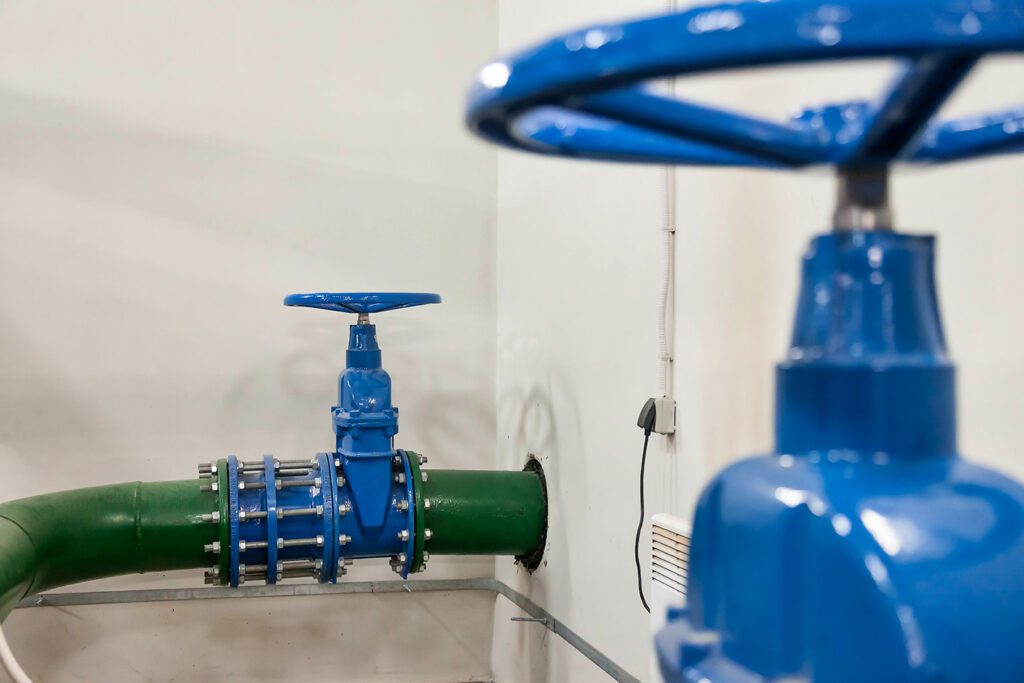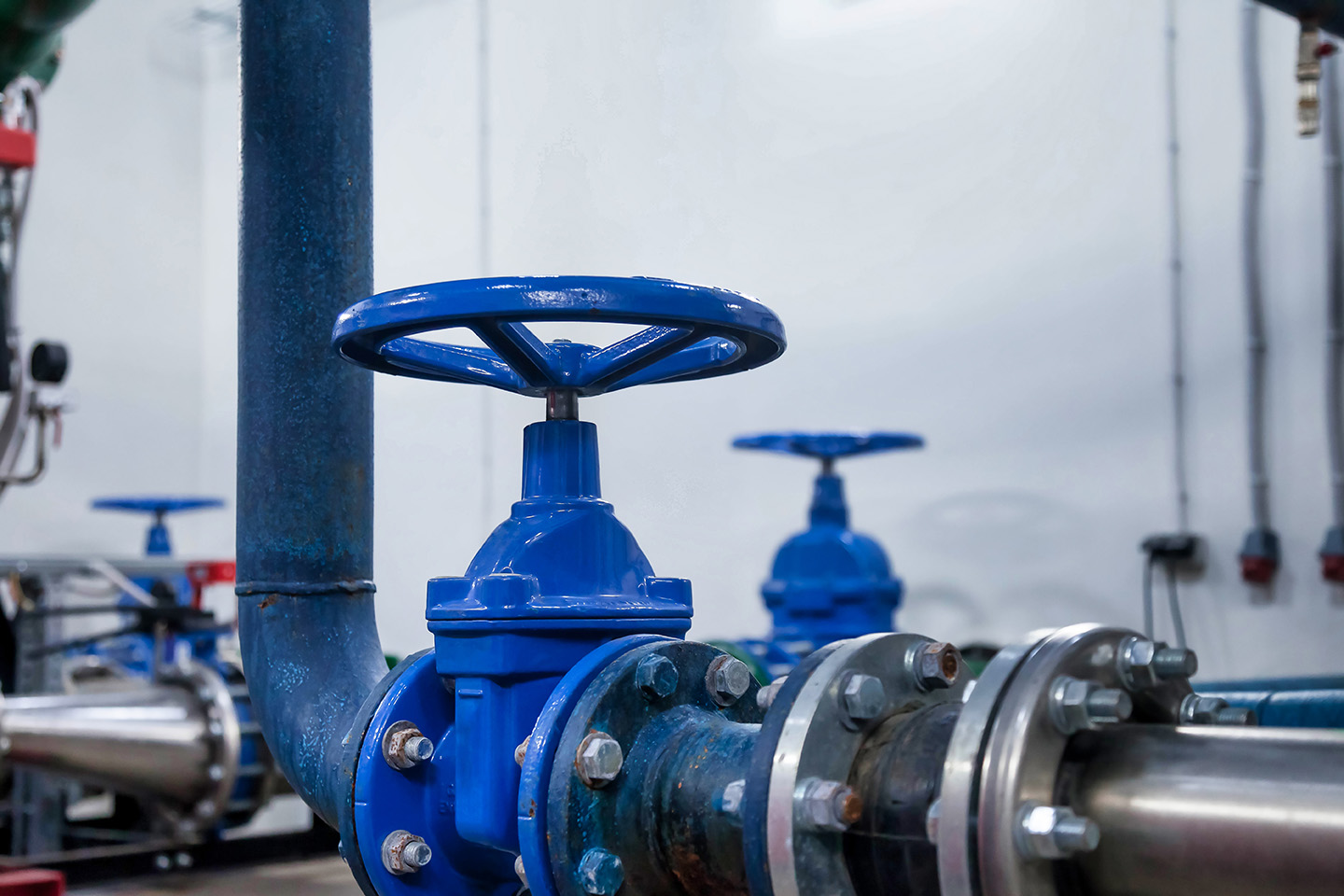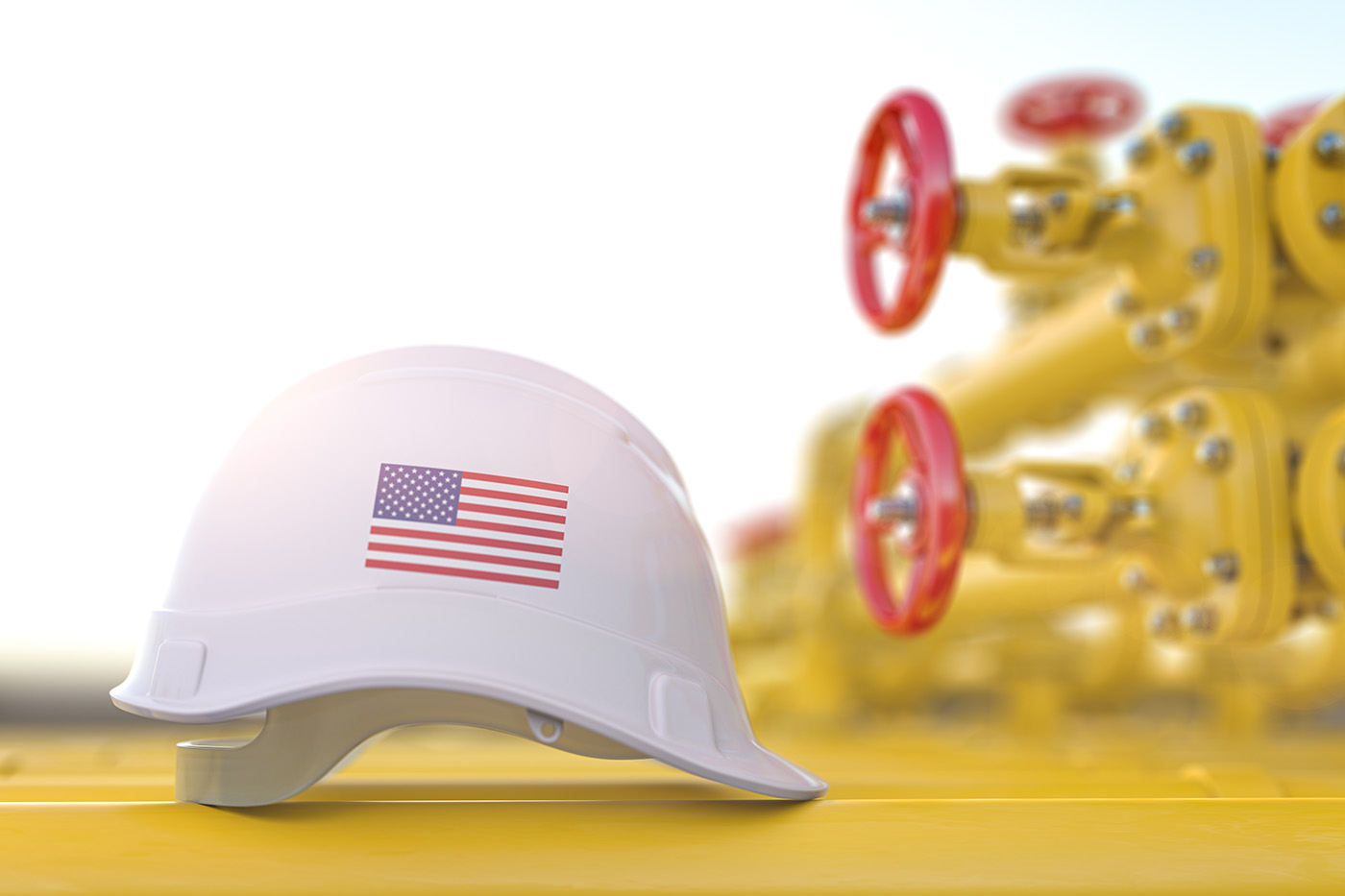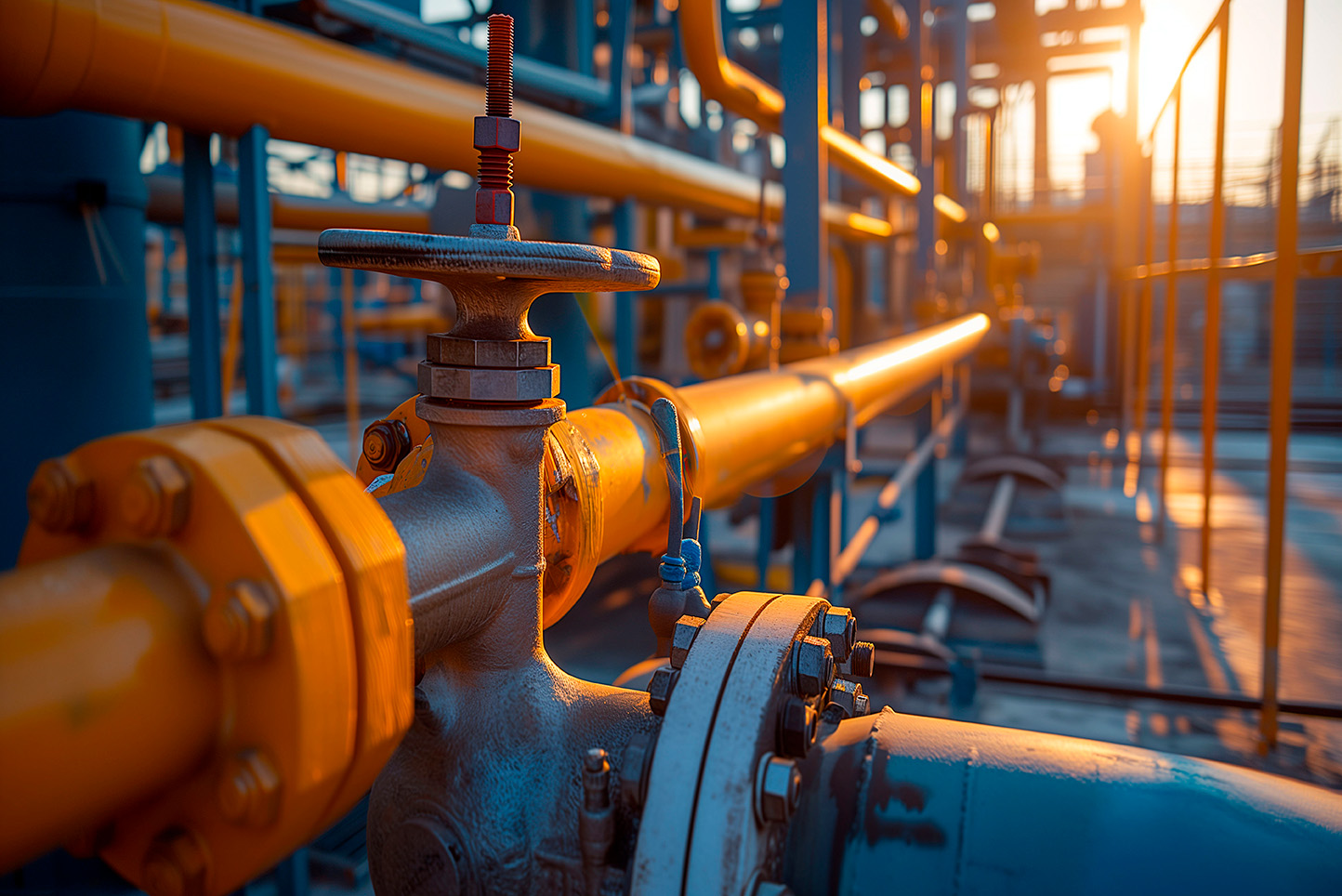
Accurate regulation of fluid and gas streams underpins every phase of oil and gas operations, with the global control valve market valued at USD 9.99 billion in 2024 and projected to surpass USD 17 billion by 2034. Flow control valves assure operational consistency, mitigate leak and overpressure risks, and deliver the precision required to optimize productivity while safeguarding personnel and assets. In this guide, you will discover:
- What flow control valves are and how they manage process streams
- The essential valve types—from ball to emergency shutdown (ESD) valves—and their unique roles
- Methods for optimizing flow rate, pressure stability, metering accuracy, and resource efficiency
- Safety compliance strategies, fugitive emission reduction, and integration with Safety Instrumented Systems (SIS)
- Cutting-edge technologies like smart valves, IIoT monitoring, and automated control systems
- Material selection guidelines for corrosion, temperature, and pressure resistance
- Total Cost of Ownership (TCO) and environmental impact benefits
- Real-world case studies demonstrating ARPC Valves’ precision and safety solutions
- Direct answers to common operational queries about valve functions, types, challenges, and standards
Whether you are an engineer specifying components or a safety compliance officer enforcing protocols, understanding how flow control valves enhance precision and safety is critical for reliable, efficient, and compliant oil and gas operations.
Global Control Valve Market Value
The global control valve market was valued at USD 9.99 billion in 2024 and is projected to exceed USD 17 billion by 2034, indicating significant growth driven by the increasing demand for efficient and safe operations in the oil and gas industry.
Market Research Future, Global Control Valve Market Research Report: Information by Type, Application, End-Use and Region – Forecast till 2034 (2024)
This market analysis provides context for the importance of flow control valves in the oil and gas sector, as discussed in the article.
What Are Flow Control Valves and Their Role in Oil and Gas?
Flow control valves are mechanical devices designed to regulate the rate, pressure, and direction of liquids or gases in pipelines. They form the cornerstone of process control by adjusting aperture based on actuator input—manual, pneumatic, hydraulic, or electric—to maintain desired operating conditions. For example, globe valves throttle high-pressure crude feed in a refinery, preserving downstream stability and preventing surges that could damage equipment.
These valves enhance operational precision by ensuring setpoints are met within tight tolerances, which improves product quality and reduces waste. Simultaneously, they elevate safety by preventing pressure excursions, isolating hazardous media during maintenance, and enabling emergency shutdown sequences. As the next section explains, the internal design and actuation method of each valve type directly influence its regulation performance and reliability.
How Do Flow Control Valves Regulate Fluid and Gas Flow?
Flow control valves regulate process streams through variable orifice sizing combined with feedback from flow or pressure sensors. An actuator adjusts stem position, changing the opening between the valve seat and plug:
- Definition + Mechanism + Benefit: A globe valve modulates flow by raising or lowering a disc against a seating ring, which creates a controlled pressure drop and precise throttling—critical for maintaining consistent downstream pressure.
- Example: In gas lift systems, this precise throttling stabilizes injection rates, optimizing reservoir performance.
This mechanism underscores the importance of valve sizing and flow coefficient (Cv) calculations to match process requirements before exploring why precision control is vital in high-stake environments.
Why Is Precision Control Critical in Oil and Gas Operations?
- Enhanced operational efficiency through stable throughput
- Reduced energy consumption by eliminating over-pumping
- Minimized quality variance in refined products
Failure to maintain precise setpoints can lead to off-spec products, unplanned shutdowns, or increased maintenance costs. This necessity for accuracy naturally leads into how valves also function as safety devices in high-risk settings.
How Do Valves Contribute to Safety in High-Risk Environments?
Flow control valves serve as both regulators and protective barriers that isolate hazardous media during emergencies. Key safety functions include:
- Isolation: Gate valves provide full-bore shut-off to safely isolate sections for maintenance.
- Overpressure Protection: Pressure safety valves (PSV) open at predetermined setpoints, releasing pressure to prevent equipment rupture.
- Emergency Shutdown: ESD valves trigger rapid closure upon fault detection, safeguarding personnel and infrastructure.
Integrating these valves into Safety Instrumented Systems (SIS) creates layered protection against blowouts, fugitive emissions, and fire hazards, ensuring compliance with regulatory standards as detailed later.
Which Types of Flow Control Valves Are Essential for Oil and Gas Precision and Safety?
Different valve designs deliver specific combinations of precision, response speed, and sealing integrity. The following table compares key valve types using an Entity–Attribute–Value taxonomy.
Valve Type | Characteristic | Primary Benefit |
Ball Valve | Quick quarter-turn operation | Rapid shut-off and reliable sealing under high pressure |
Gate Valve | Wedge-type gate | Full-bore flow and minimal pressure drop |
Globe Valve | Linear disc and seat | Fine throttling resolution and flow stability |
Check Valve | Uni-directional poppet or swing | Backflow prevention and system integrity |
ESD Valve | Fail-safe actuator | Immediate emergency isolation |
Pressure Safety Valve (PSV) | Spring-loaded relief | Overpressure protection and compliance |
Needle Valve | Extra-fine stem thread | Micro-metering for precise dosing applications |
How Do Ball Valves Ensure Quick Shut-off and High-Pressure Safety?
- Definition + Mechanism + Benefit: A ball valve features a fully encapsulated ball with a precision bore; rotating it rapidly seals the line, preventing leaks even at extreme pressures.
- Example: In offshore platforms, actuated ball valves isolate multiphase pipelines within seconds during fire detection, meeting SIL 3 safety integrity requirements.
Fast operation and bubble-tight sealing make ball valves indispensable for critical shutdown protocols, setting the stage for isolation roles fulfilled by gate valves.
What Are the Benefits of Gate Valves for Isolation and Full Flow Control?
- Definition + Mechanism + Benefit: The gate valve gate descends between seats to halt flow, offering full-bore access that minimizes pipeline erosion and fouling—ideal for shut-in scenarios.
- Example: Midstream transmission lines rely on gate valves to provide unobstructed flow during peak throughput, reducing energy losses.
With their robust isolation capability, gate valves complement throttling and safety functions, as described in the next section.
How Do Globe Valves Provide Precise Throttling and Regulation?
- Definition + Mechanism + Benefit: A globe valve adjusts the plug position to create a precise pressure drop across the seat, enabling fine control of flow rate and pressure.
- Example: Refinery fractionation units use globe valves to regulate reflux flow within ±1% accuracy, stabilizing separation trays.
This fine-tuning capability makes globe valves the preferred choice for applications demanding precise process control before turning to safety roles of backflow prevention.
Why Are Check Valves Important for Preventing Backflow and Maintaining System Integrity?
- Definition + Mechanism + Benefit: A check valve relies on differential pressure to close its disc against a seat, preventing dangerous reverse migration of hydrocarbons.
- Example: Gas lift installations use check valves to maintain wellbore pressure and prevent fluid fallback during shutdown.
Preventing backflow maintains operational integrity and protects pumps and compressors from damage, which naturally leads to dedicated emergency shutdown protections.
How Do Emergency Shutdown (ESD) Valves Enable Rapid Response Safety?
- Definition + Mechanism + Benefit: ESD valves incorporate fail-safe actuators that drive the closure element to shut path within seconds, isolating hazardous sections.
- Example: Drilling rigs employ ESD valves integrated with BOP sensors to sever flow in blowout scenarios, arresting uncontrolled releases.
Rapid isolation complements overpressure relief by PSVs, further explored below.
What Role Do Pressure Safety Valves (PSV) Play in Overpressure Protection?
- Definition + Mechanism + Benefit: A PSV opens when system pressure exceeds a setpoint, discharging fluid to maintain vessel integrity and comply with API 520/526 standards.
- Example: Refinery storage tanks rely on PSVs to prevent tank ruptures during thermal expansion of vapors.
Overpressure protection is critical for regulatory compliance, setting the context for micro-metering uses of needle valves.
How Are Needle Valves Used for Micro-Metering and Fine Flow Adjustment?
- Definition + Mechanism + Benefit: A needle valve stem moves gradually through the seat, controlling minute flow rates in injection and sampling applications.
- Example: Corrosion inhibitor dosing skids use needle valves to inject precise ppm-level chemicals into gas lines, maintaining integrity.
Micrometer-level control provided by needle valves underpins advanced metering and dosing strategies, which we examine next.
How Do Flow Control Valves Optimize Precision Fluid Management in Oil and Gas?
Achieving optimal efficiency and resource utilization hinges on controlling flow rate, pressure stability, and accurate dosing. By integrating calibrated valves with instrumentation and control logic, operators maximize output while minimizing waste. The following table illustrates key optimization attributes (Entity → Attribute → Value).
Entity | Attribute | Value / Outcome |
Flow Control Valve | Flow Rate Optimization | ±2% accuracy in throughput, reducing over-processing |
Pressure Regulator | Stability | Maintains outlet pressure within ±1 bar under load changes |
Metering Valve | Dosing Precision | Achieves chemical dosing to ±0.5% of target concentration |
Automated Control Loop | Response Time | 150 ms adjustment for rapid process disturbance recovery |
How Is Flow Rate Optimized for Operational Efficiency?
Flow rate optimization relies on correct valve sizing, dynamic flow coefficient (Cv) matching, and feedback from flow transmitters:
- Definition + Mechanism + Benefit: Flow control valves tuned with variable frequency drive pumps adjust flow in real time based on sensor feedback, reducing energy consumption by up to 10%.
- Example: Water injection systems maintain reservoir pressure with minimal power draw by continuously adapting valve opening to injection pressure fluctuations.
Stable flow minimizes pump cycling and thermal shocks, preparing the way for pressure regulation strategies.
What Methods Ensure Accurate Pressure Regulation and Stability?
- Definition + Mechanism + Benefit: Pressure control valves employ pneumatic or electric actuators under PID algorithms to correct deviations within seconds, maintaining process stability.
- Example: Gas sweetening units leverage pressure control valves to keep amine absorber pressure constant, avoiding amine degradation and foaming.
This pressure stability underpins precise metering applications, as shown next.
How Are Metering and Dosing Applications Enhanced by Valves?
- Definition + Mechanism + Benefit: Metering valves use stepper-motor actuators for incremental adjustments based on flow data, ensuring blend ratios within tight tolerances.
- Example: In enhanced oil recovery, surfactant injection valves maintain emulsion ratios to ±0.3%, preserving sweep efficiency.
Accurate dosing reduces chemical usage and environmental footprint, linking to productivity and resource management impacts.
How Does Precision Control Impact Productivity and Resource Management?
- Definition + Mechanism + Benefit: Integrated valve control prevents over-injection of reagents and ensures consistent feed rates, boosting production by 5–7% while cutting operating costs.
- Example: A heavy oil pumping station saw equipment lifespan extend by 20% through reduced flow pulsations and cavitation when fine control valves were optimized.
Having explored precision gains, we now turn to how flow control valves support safety compliance and risk mitigation.
How Do Flow Control Valves Enhance Safety Compliance and Risk Mitigation in Oil and Gas?
Flow control valves form critical barriers against leaks, overpressure incidents, and uncontrolled emissions. By meeting stringent standards and integrating into Safety Instrumented Systems (SIS), they provide systematic risk reduction. The following list outlines core safety contributions:
- Preventing leaks and fugitive emissions through metal-to-metal sealing and bellows-packed designs.
- Protecting equipment and personnel from overpressure via spring-loaded or pilot-operated relief valves.
- Integrating with SIS for automated shutdown sequences upon fault detection.
- Ensuring conformance to API, ASME, and environmental regulations to avoid penalties and shutdowns.
These safety functions collectively sustain operational continuity and regulatory compliance, which we detail in the subsections below.
How Do Valves Prevent Leaks and Reduce Fugitive Emissions?
- Definition + Mechanism + Benefit: Soft-seat and live-loaded packing ensure consistent sealing force, lowering fugitive emissions by over 90%.
- Example: Sour service control valves with PTFE-packings prevent H₂S escape, protecting personnel and meeting EPA requirements.
Enhanced sealing sets the stage for overpressure and blowout protections.
What Protections Do Valves Provide Against Overpressure and Blowouts?
- Definition + Mechanism + Benefit: PSVs and rupture discs work in tandem to relieve pressure rapidly, preventing catastrophic equipment failure.
- Example: Offshore processing trains employ dual relief devices to meet SIL 2 requirements, ensuring safe depressurization under emergency conditions.
This relief capability integrates into SIS architectures as shown next.
How Are Valves Integrated into Safety Instrumented Systems (SIS)?
- Definition + Mechanism + Benefit: Safety PLCs monitor pressure, temperature, and flow; upon detecting unsafe conditions, they signal ESD and PSV actuators to isolate or depressurize the system.
- Example: A deepwater subsea system used SIS-controlled ESD valves to halt production within 2 seconds of leak detection, protecting assets and environment.
This system integration depends on strict adherence to industry standards.
Why Is Adherence to API and ASME Standards Critical for Valve Safety?
Standard | Governs | Ensures |
API 6A | Wellhead & Xmas Tree | Valve design, materials, high-pressure performance |
API 6D | Pipeline Valves | Manufacturing, testing, documentation |
ASME BPVC Sect. VIII | Pressure Vessels | Relief device sizing, testing, certification |
Compliance with these standards demonstrates reliability, simplifies audits, and qualifies valves for critical service.
Valve Standards and Compliance
Industry standards like API 6A/6D and ASME BPVC specify design, material, testing, and documentation protocols, ensuring valves meet safety margins, performance guarantees, and audit requirements for critical oil and gas applications.
American Petroleum Institute, API Standards (Various Years)
This citation supports the article’s emphasis on the importance of adhering to industry standards for valve safety and operational integrity.
What Advanced Technologies Improve Flow Control Valve Performance in Oil and Gas?
Emerging valve innovations leverage smart sensors, IIoT connectivity, and automation to enhance uptime and precision. Key advancements include:
- Smart Valves with embedded position, pressure, and temperature sensors.
- Remote Monitoring platforms delivering real-time diagnostics and alerting.
- Predictive Maintenance algorithms analyzing vibration and torque signatures to schedule service before failure.
- Automated Flow Control Systems coordinating multiple valves for holistic process optimization.
Each technology layer contributes to operational safety and resource efficiency, detailed below.
How Do Smart Valves and IIoT Integration Enhance Monitoring?
- Definition + Mechanism + Benefit: IIoT-enabled valves transmit position and torque data to centralized platforms, enabling condition assessment and trend analysis.
- Example: A remote gas compressor station used smart valve data to detect packing wear early, avoiding an unplanned shutdown.
Smart Valve Technology
Smart valves incorporate digital transducers that stream status and performance metrics, transmitting position and torque data to centralized platforms. This enables condition assessment and trend analysis, which is essential for predictive maintenance and optimizing operational efficiency.
International Society of Automation, Smart Valve Technology (2023)
This source provides further information on the benefits of smart valve technology, as discussed in the article.
These insights underpin remote monitoring and predictive maintenance strategies.
What Are the Benefits of Remote Monitoring and Predictive Maintenance?
Entity | Attribute | Benefit |
Predictive Maintenance | Failure Prediction Accuracy | 95% detection of packing and actuator wear |
Remote Monitoring System | Diagnostic Coverage | 24/7 visibility into valve health and performance |
Maintenance Scheduling | Downtime Reduction | Up to 30% decrease in unplanned outages |
This maintenance optimization reduces costs and extends valve lifespan, paving the way for fully automated control loops.
How Do Automated Flow Control Systems Improve Operational Safety and Precision?
- Definition + Mechanism + Benefit: Closed-loop control systems adjust feed rates, pressure, and injection sequences automatically, maintaining target setpoints under dynamic loads.
- Example: A gas processing plant implemented model-predictive control across choke valves, boosting throughput by 8% while preserving safety margins.
Automation maximizes both performance and protection, after which material selection ensures long-term durability.
How Does Material Selection Affect Valve Durability in Harsh Oil and Gas Environments?
Valve longevity in corrosive, erosive, and high-temperature conditions depends on advanced materials and coatings. Key considerations include:
- Corrosion and Erosion Resistance
- High-Temperature and High-Pressure Capabilities
- Specialty Alloys and Surface Treatments
By matching metallurgy to process fluids, operators prolong service intervals and ensure reliable performance. Detailed attributes follow.
Why Is Corrosion and Erosion Resistance Vital for Valve Longevity?
- Definition + Mechanism + Benefit: Stainless steels (316L), duplex alloys, and Inconel resist corrosion and maintain mechanical strength, preventing seat damage and leak paths.
- Example: Sour gas service valves with HVOF coatings achieved a 5× increase in erosion resistance, reducing overhaul frequency.
Corrosion resistance requirements escalate in high-temperature and high-pressure environments.
How Are Valves Designed for High-Temperature and High-Pressure Conditions?
Entity | Attribute | Value / Specification |
Valve Body Material | Maximum Temperature | Up to 540 °C (Inconel 625, AISI 4130) |
Sealing Materials | Pressure Rating | Class 2500 (ASME) up to 420 bar |
Fastener Alloys | Tensile Strength | ≥ 965 MPa (Hastelloy C276) |
Engineering for extremes ensures valves maintain sealing integrity, leading to the use of specialty coatings.
What Specialty Alloys and Coatings Are Used to Enhance Valve Performance?
- Definition + Mechanism + Benefit: Coatings like tungsten carbide and nickel-chromium boride deposited by HVOF reduce erosion and corrosion, enabling stable operation in abrasive or acidic streams.
- Example: Coated gate valves in shale gas applications maintained leak rates below 10⁻⁶ mbar·L/s over two years.
Having examined materials, we now explore how these durability features lower overall cost and environmental impact.
How Do Flow Control Valves Reduce Total Cost of Ownership and Environmental Impact?
Investing in high-quality valves yields measurable TCO savings and emission reductions. Benefits include:
- Lower Maintenance and Downtime from durable designs.
- Minimized Fugitive Emissions via enhanced sealing.
- Improved ROI through efficiency gains and extended service intervals.
This section quantifies these advantages.
How Do Durable Valves Lower Maintenance and Downtime Costs?
- Definition + Mechanism + Benefit: Long-life seat materials and predictive maintenance cut scheduled overhauls by 40%, saving both labor and lost production time.
- Example: A refinery’s switch to coated globe valves reduced repair intervals from six months to eighteen months.
Reduced maintenance supports environmental objectives by preventing unplanned releases.
In What Ways Do Valves Help Minimize Environmental Emissions?
Entity | Attribute | Environmental Benefit |
Metal Bellows Valve | Emission Rate | < 0.1 kg/year fugitive emissions per valve |
ESD Valve | Response Time | < 3 s closure to stop accidental venting |
PSV | Setpoint Accuracy | Prevents pressure excursions that trigger flaring |
This emission control complements cost savings, leading to quantifiable ROI.
What Is the Return on Investment (ROI) from Using High-Quality Flow Control Valves?
- Definition + Mechanism + Benefit: Energy savings, reduced unplanned shutdowns, and lower emissions translate into payback periods of less than two years in many installations.
- Example: A midstream operator realized a 150% ROI over five years by upgrading to intelligent ESD and PSV solutions.
With cost and sustainability benefits established, we review real-world proof points.
What Real-World Examples Demonstrate Flow Control Valves’ Impact on Precision and Safety?
Case studies illustrate how tailored valve solutions deliver measurable gains in demanding projects.
How Have ARPC Valves Improved Safety in High-Pressure Oil and Gas Projects?
ARPC Valves supplied actuated ball and ESD valves to a deepwater drilling operation:
- Definition + Mechanism + Outcome: Customized ball valves with fire-safe trims and rated SIL 3 actuators enabled reliable emergency cut-off within 2 seconds under 500-bar conditions, eliminating leak incidents over two years.
This deployment underscores the value of integrated safety solutions before exploring precision enhancements.
What Precision Enhancements Have Been Achieved Through Valve Technology?
In a heavy oil production expansion, ARPC Valves implemented smart globe valves with PID loops:
- Definition + Mechanism + Outcome: Real-time adjustment of injection rates improved bitumen recovery by 6%, while maintaining injection pressure within ±0.5 bar.
- Example: Automated control cut chemical costs by 12% by synchronizing metering valves with process analytics.
These results highlight the synergy between precision control and process optimization, bolstered by compliance with standards as the final proof point.
How Do Industry Standards and Compliance Support Successful Implementations?
Meeting API and ASME criteria ensures reliability and audit readiness:
- Definition + Mechanism + Outcome: All ARPC Valves products undergo hydrostatic and fire-safe testing per API 6A/6D, with documentation for ASME BPVC certification—guaranteeing seamless regulatory acceptance.
These examples demonstrate how standard-compliant, high-performance valves drive operational excellence.
What Are Common Questions About Flow Control Valves in Oil and Gas?
What Is the Function of a Flow Control Valve in Oil and Gas?
Flow control valves regulate liquid and gas movement by varying orifice size through actuator commands, ensuring stable process conditions, precise flow rates, and safe operations by managing pressure and preventing hazardous events.
How Do Flow Control Valves Contribute to Safety in Oil and Gas Operations?
Flow control valves enhance safety by isolating hazardous streams, preventing overpressure, and automating shutdowns through mechanisms like emergency shut-off, pressure relief, and bidirectional isolation—protecting personnel, assets, and the environment.
Which Valve Types Are Most Commonly Used in Oil and Gas?
The most common valve types include ball, gate, and globe valves for mainline control; check valves for backflow prevention; needle valves for micro-metering; pressure safety valves for overpressure relief; and emergency shutdown valves for rapid isolation.
What Challenges Do Valves Face in Oil and Gas Environments?
Valves contend with extreme pressures, high temperatures, corrosive and erosive media, and the need for rapid actuation under fault conditions. Material degradation, seal wear, and actuator failure are primary maintenance challenges.
How Do Industry Standards Ensure Valve Reliability and Compliance?
Standards like API 6A/6D and ASME BPVC specify design, material, testing, and documentation protocols, ensuring that valves meet safety margins, performance guarantees, and audit requirements for critical oil and gas applications.
Flow control valves stand at the core of precise, safe, and efficient oil and gas operations. By selecting the right valve type, optimizing control strategies, embracing advanced technologies, and adhering to rigorous material and compliance standards, operators achieve robust performance, lower costs, and superior environmental protection. Trust in engineered solutions from industry experts to deliver the reliability and precision your projects demand.




